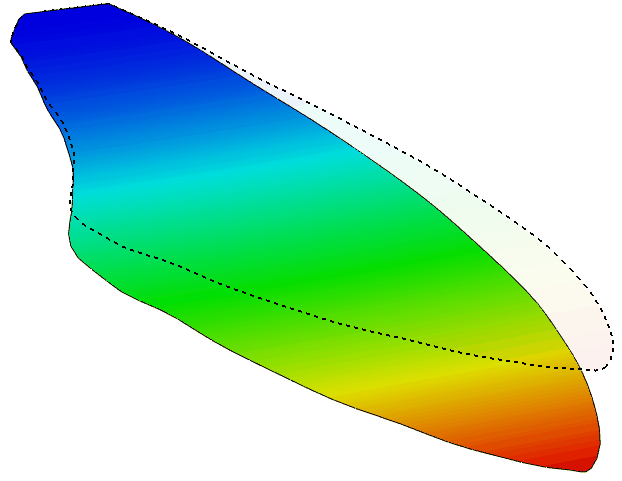Research
Flapping Wing Fluid-Structure Interaction
 Flapping wings, such as those employed by flying insects, deform under both fluid
and inertial forces during flight. The wing flexibility that permits this deformation
is believed to improve the insect's aerodynamic performance and energy efficiency.
However, many mathematical models that estimate wing deformation are high-order and
require considerable computational resources to solve. These models are consequently
challenged by parametric studies as well as optimization routines, and cannot typically
be used for real-time control.
Flapping wings, such as those employed by flying insects, deform under both fluid
and inertial forces during flight. The wing flexibility that permits this deformation
is believed to improve the insect's aerodynamic performance and energy efficiency.
However, many mathematical models that estimate wing deformation are high-order and
require considerable computational resources to solve. These models are consequently
challenged by parametric studies as well as optimization routines, and cannot typically
be used for real-time control.
 To overcome these issues, our team is developing computationally efficient FSI models
of flapping, flexible wings. We leverage modal reduction techniques to formulate
low-order structural equations of motion, and employ numerous fluid models such as blade
element theory and unsteady vortex lattice methods to predict aerodynamic forces.
We validate our models experimentally via custom-fabricated mechanisms that emulate
insect flapping kinematics.
To overcome these issues, our team is developing computationally efficient FSI models
of flapping, flexible wings. We leverage modal reduction techniques to formulate
low-order structural equations of motion, and employ numerous fluid models such as blade
element theory and unsteady vortex lattice methods to predict aerodynamic forces.
We validate our models experimentally via custom-fabricated mechanisms that emulate
insect flapping kinematics.
Multi-Scale Thorax Mechanics
The insect thorax is a highly optimized structure that is central to the flight "drivetrain". Two sets of muscles contract to deform the thorax during flight, and the small thoracic deformations are amplified into large wing rotation via an elaborate linkage mechanism. Despite the importance of the thorax to insect locomotion, relatively little is known about its microstructural properties and how those properties affect macroscale dynamics. A better understanding of these principles can guide the design of novel micro robotic systems.
Our team, in collaboration with Dr. Chelsea Heveran, is exploring the multi-scale mechanics of the insect thorax through various techniques including nano-indentation, raman and confocal microscopy, and frequency response characterization. We are comparing structural features across insect orders to determine the common traits that underpin succesful thorax design.

System-Level Modeling of the Insect Flight Mechanism
The components (e.g., thorax, wing, wing hinge) of the insect flight system work synergistically to make this challenging mode of locomotion energetically efficient and robust to external disturbances, such as collisions and gusts of wind. However, many studies focus narrowly on the dynamics of individual components and neglect interactions with the remainder of the system.
Our group is working to synthesize the previously described thorax and wing component models into a comprehensive system-level model. Such a model will permit us to investigate dynamic couplings, and allow us to address relevant biological questions, for example: How do the flexible wing and thorax exchange energy? How does the fluid acting on the wing affect the deformation of the thorax? Answers to these questions can inform micro-robotic technologies inspired by insect locomotion.

